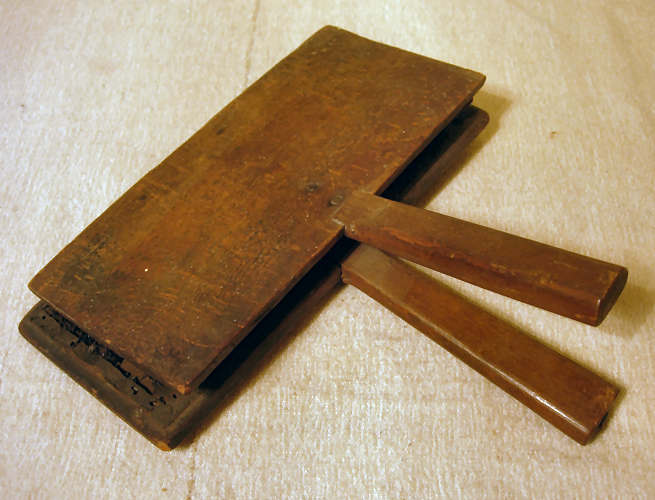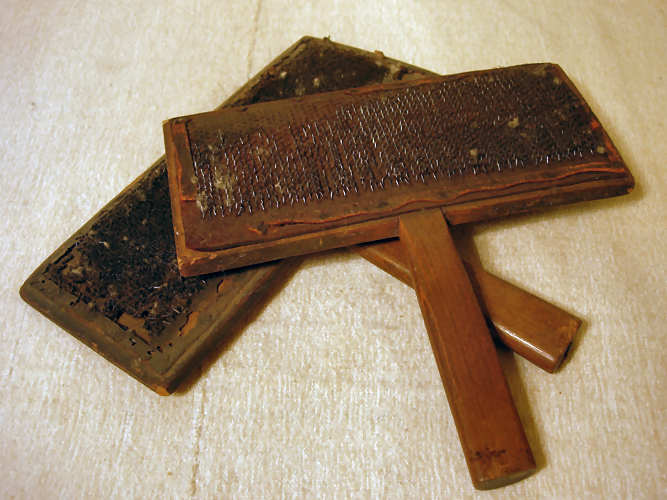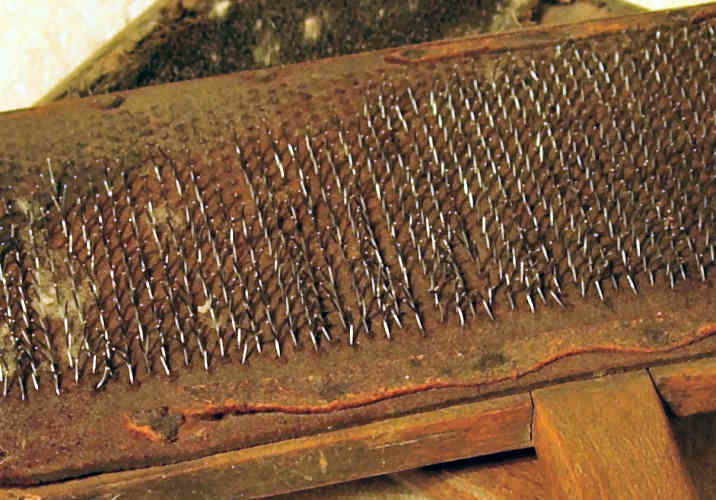


| Wool Carders performed basically the same function as hatchels did for flax. They were used to prepare the wool for spinning by removing irregularities that would cause the yarn to be uneven and by fluffing the wool and mixing it thoroughly. The irregularities generally consisted of bits of plants that the animal's fleece picked up from their natural surroundings. It should be noted that many people wrongly assume that carding was performed in order to straighten out the fibers. Carding simply removed any debris and any matted fibers. The tool exhibited here was called a carder (or sometimes simply a card), and the process whereby you would use the tool was called carding. A small handfull of wool is separated from the sheared fleece and placed on one of the carders. The other carder is placed overtop the first, but with the handle positioned in the opposite direction. As the two carders make contact with the portion of wool between them, they are moved in the opposite direction, and the wool between grabbed by the many little bent wire hooks and teased apart. In this process, the wool is said to be combed or scarified. Following the initial swipe, the top carder is turned so that both handles face in the same direction. The two make contact again, and this action results in the wool being released by one carder, and collected on the other. Once more the top carder is turned and repositioned so that its handle points in the direction opposite to that of the bottom carder. The wool is again scarified. And once more the top carder is turned around so that its handle faces in the same direction as the bottom carder. The wool is released as the two carders are scraped against each other. This process is repeated five or six times. Then the two carders are separated, the piece of wool is removed, and then rolled gently between the person's hands to form a cylinder of fluffy wool known as a rolag. The rolag was held by the wool spinner to be fed into the spindle as she spun on the great wheel. One last thing should be noted. If a farmer did not have carders, he would use a teasel, the name given to a thistle, Dipsacus sativus. It was this thistle's prickly head from which the carder's bent wire barbs were derived. |


